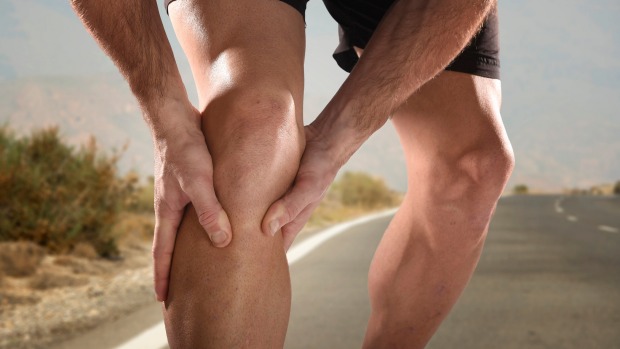The reason you get injured could be in your DNA
Genetic research could reveal why we’re prone to injury

Feel like you’re always getting injured from exercise? There could be a reason behind that and it looks like your parents — and their parents — are to blame.
In one of Australia’s longest running studies, gene mapping technology is being used to learn why some people seem more prone to injury than others. Recreational runners like you and me are being asked to support the research by completing a 20-minute online survey and maybe (if we match the criteria) supplying some DNA from a DIY saliva test.
Having suffered a painful stress fracture of my fibula when I was training for my first marathon a few years ago, I was keen to learn more about the study and what’s in it for professional athletes and recreational runners alike.
Nicole Vlahovich has a PhD in Medical Science and is the Exercise and Genetics Research Manager at the AIS. She’s heading up the study, which aims to provide world-first information into the genetic variances that contribute to increased risk of, or protection from Achilles Tendinopathy and stress fractures sustained through running.
A map of injuries
She said that while runners often get over-use injuries, there isn’t a lot of information on why some people injure themselves more when compared with people who are similar in age, gender, weight and training program.
“The two most common injuries for runners are Achilles Tendinopathy and bone stress injuries such as stress fractures or stress reactions below the knee,” says Vlahovich. “Worldwide, there is some research on genetics and common running injuries, but we hope this study will help to identify several gene patterns that could point to an increase of these injuries occurring in some people.”
Why runners
Vlahovich says runners were chosen for the study because of the prevalence of injury and because we are a thorough bunch.
“Runners’ injuries are well documented in literature, and because we are looking specifically at over-use injuries runners were the perfect research subject as they get these injuries from running lots of kilometres,” says Vlahovich.
“Runners are also quite particular about their training and are good at recalling the distances they run. Through running gadgets like GPS watches and phone apps they also have consistent data about their training, making them a reliable study population.”
The broader details
The study is broken into two parts. The first is the largest survey of Australian runners, which Vlahovich says will help paint a picture of the typical Australian runner.
“The survey lets us examine people’s running habits, health status such as diet, medication usage and injuries,” says Vlahovich. “It sheds light on how healthy runners are, how much they weigh, how much they eat, how far they run and if they’ve had any injuries recently.”
It also provides a way for Vlahovich and her team to recruit participants for the genetics study.
“If someone is eligible to take part in the genetic study, we get them to send us a saliva sample and their DNA gets grouped into one of three cohorts — uninjured, Achilles Tendinopathy injury or below the knee bone injury — for testing.
It’s all in the DNA
This is where things get technical and for most people (especially me) hard to comprehend. From here, the researchers extract the DNA and run it through a special and very expensive machine that reads and examines more than 500,000 parts of the runner’s genetic make-up.
The researchers then start to look for differences between the thousands of samples they have to try and identify specific inherited gene variances that can increase or decrease the risk of Achilles Tendinopathy or bone stress injuries amongst runners.
Individual strengths and weaknesses
Vlahovich says this knowledge will be used to develop programs for the prevention of injury in sport and physical activity.
“Through this research, we are not trying to find out which genes are right for running. We are trying to understand how we can tailor our injury prevention programs to the individual athlete,” says Vlahovich.
“This study will allow coaches to work with athletes in designing training programs that are specifically tailored to the unique genetic strengths and weaknesses of the individual runners and ultimately help all athletes in injury prevention.”
